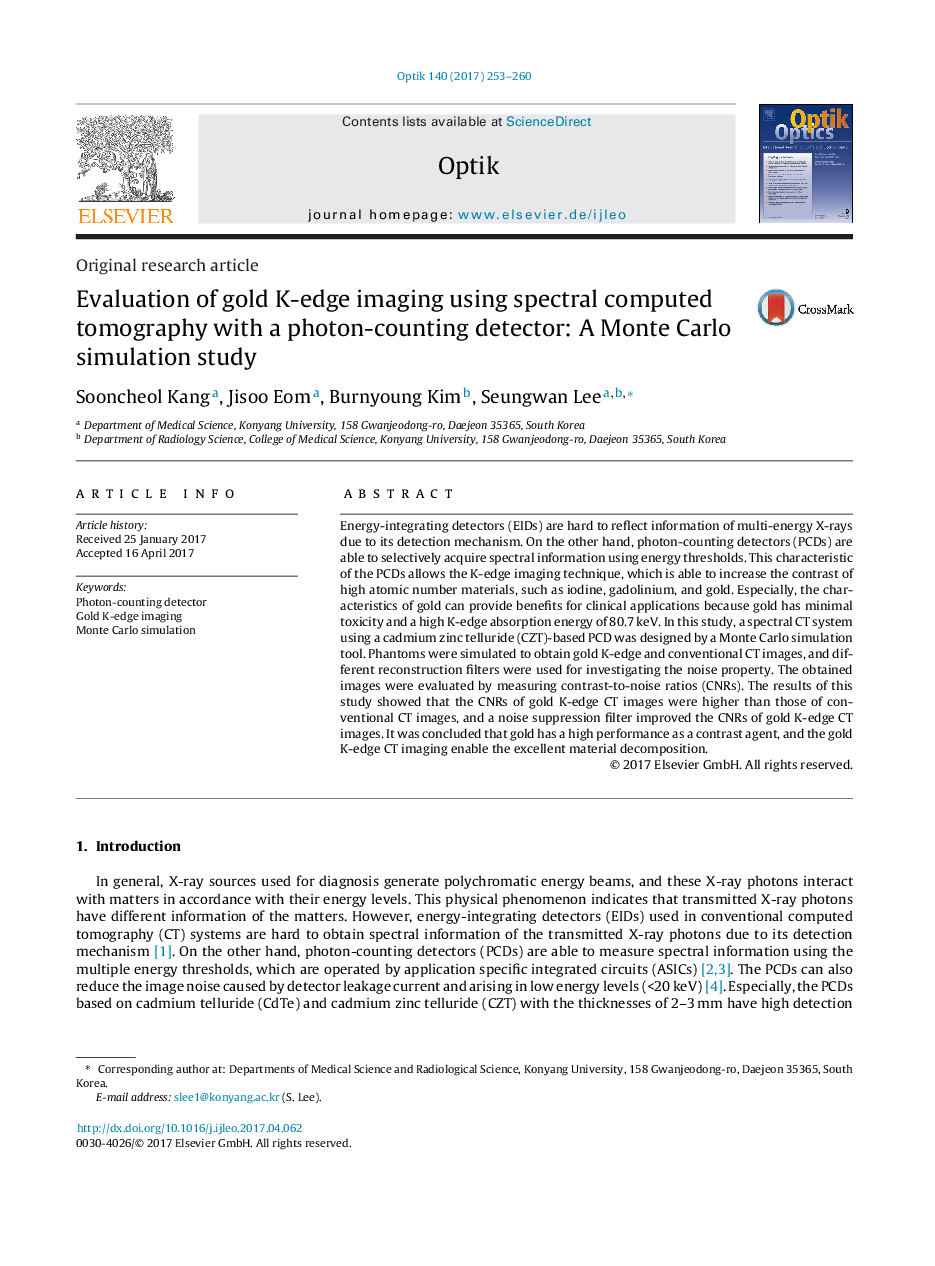| Article ID | Journal | Published Year | Pages | File Type |
|---|---|---|---|---|
| 5025470 | Optik - International Journal for Light and Electron Optics | 2017 | 8 Pages |
Abstract
Energy-integrating detectors (EIDs) are hard to reflect information of multi-energy X-rays due to its detection mechanism. On the other hand, photon-counting detectors (PCDs) are able to selectively acquire spectral information using energy thresholds. This characteristic of the PCDs allows the K-edge imaging technique, which is able to increase the contrast of high atomic number materials, such as iodine, gadolinium, and gold. Especially, the characteristics of gold can provide benefits for clinical applications because gold has minimal toxicity and a high K-edge absorption energy of 80.7 keV. In this study, a spectral CT system using a cadmium zinc telluride (CZT)-based PCD was designed by a Monte Carlo simulation tool. Phantoms were simulated to obtain gold K-edge and conventional CT images, and different reconstruction filters were used for investigating the noise property. The obtained images were evaluated by measuring contrast-to-noise ratios (CNRs). The results of this study showed that the CNRs of gold K-edge CT images were higher than those of conventional CT images, and a noise suppression filter improved the CNRs of gold K-edge CT images. It was concluded that gold has a high performance as a contrast agent, and the gold K-edge CT imaging enable the excellent material decomposition.
Related Topics
Physical Sciences and Engineering
Engineering
Engineering (General)
Authors
Sooncheol Kang, Jisoo Eom, Burnyoung Kim, Seungwan Lee,
